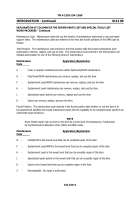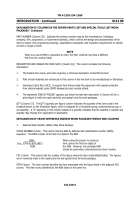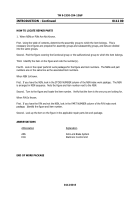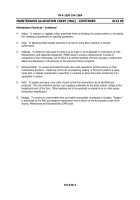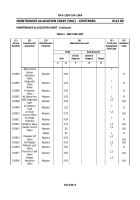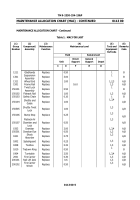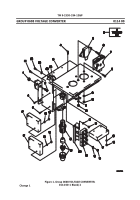TM-9-2330-334-13-P - Page 915 of 1184
TM 9-2330-334-13&P
MAINTENANCE ALLOCATION CHART (MAC)
0113 00
0113 00-1
INTRODUCTION
The Army Maintenance System MAC
This introduction provides a general explanation of all maintenance and repair functions authorized at the
two maintenance levels under the Two-Level Maintenance System concept.
This MAC designates overall authority and responsibility for the performance of maintenance functions on
the identified end item or component.
The application of the maintenance functions to the end item or
component shall be consistent with the capacities and capabilities of the designated maintenance level,
which are shown on the MAC in column (4) as:
Field –- includes two columns, Unit Maintenance and Direct Support maintenance.
The Unit
maintenance column is divided again into two more subcolumns, C for Operator or
Crew and O for Unit
maintenance.
Sustainment –- includes two subcolumns, General Support (H) and Depot (D).
The tools and test equipment requirements list the tools and test equipment (both special tools and
common tool sets) required for each maintenance function as referenced from the MAC.
The remarks contain supplemental instructions and explanatory notes for a particular maintenance function.
Maintenance Functions
Maintenance functions are limited to and defined as follows:
1.
Inspect.
To determine the serviceability of an item by comparing its physical, mechanical, and/or
electrical characteristics with established standards through examination (e.g. by sight, sound, or feel).
This includes scheduled inspection and gagings and evaluation of common tubes.
2.
Test.
To verify serviceability by measuring the mechanical, pneumatic, hydraulic, or electrical
characteristics of an item and comparing those characteristics with prescribed standards on a
scheduled basis; i.e., load testing of lift devices and hydrostatic testing of pressure hoses.
3.
Service.
Operations required periodically to keep an item in proper operating condition, e.g. to clean
(includes decontaminate, when required), to preserve, to drain, to paint, or to replenish fuel,
lubricants, chemical fluids, or gases.
This includes scheduled exercising and purging of recoil
mechanisms.
The following are examples of service functions:
a.
Unpack.
To remove from packing box for service or when required for the performance of
maintenance operations.
b.
Repack.
To return item to packing box after service and or maintenance operation.
c.
Clean.
To rid the item of contamination.
d.
Touch up.
To spot paint scratched or blistered surfaces.
e.
Mark.
To restore obliterated identifications.
Back to Top






